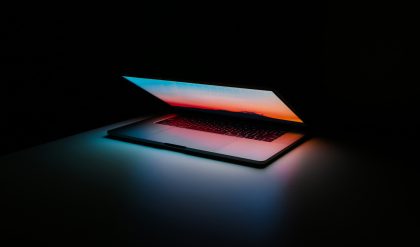When talking about smart homes, you often come across phrases like “Supports Alexa” or “Google Assistant included”. What this refers to are the digital assistants that you can control with voice commands in order to, for example, play music, listen to the news or control smart devices in your home. Instead of picking up the phone and clicking on an app, you simply say what you want to happen (“Alexa, play a song on Spotify”).
These voice assistants are built into smartphones and smart speakers, among other things. The most common assistants on the market today are Amazon Alexa, Google Assistant, and Apple Siri.
There are many different voice assistants made by various tech companies. Two of the most popular are Google Assistant and Alexa.
Here, we will present Alexa, what features the assistant has and uses as well as how to use it to control your smart home.
Meet Alexa
Amazon has rewritten the rules of e-commerce, but they are also pioneers when it comes to smart speakers and digital assistants. Amazon has developed the Echo speakers themselves with the built-in assistant Alexa. That Amazon, an online retailer, would release its own voice assistant came as a surprise to many, but today, it is one of the most popular on the market.
Alexa has become a great success and there are many different kinds of devices that are compatible with Alexa. Amazon is working hard to develop support for more languages and to improve the artificial intelligence behind it.
Like other smart speakers and digital assistants, Alexa listens to your commands. The most common starting word is precisely Alexa, but it can also get it to respond to “Echo”, “Amazon”, and “Computer”. When you say Alexa, the assistant will respond and listen for your command (a blue ring will also light up on the Echo speaker to show that it is ready). Then you just have to say what you want to happen, for example, “Alexa, turn on the lights in the kitchen and play the news”. Some examples of what Alexa can do are:
Answer questions:
- Play music, for example from Spotify
- Play news, weather, etc.
- Shop on Amazon
- Make lists, such as shopping and to-do lists
- Manage, read, and add events to your calendar
- Use as an alarm clock, timer or reminder
- Control smart devices in your home, such as smart lighting, thermostats, monitoring, TV, and more.
- Alexa also manages to differentiate between different voices, so that each person in the family can receive an individual and personal service. For example, if someone says “Alexa, what is on my schedule for today?”, Alexa hears who it is that asks and selects the right calendar for that particular person.
Alexa skills
One of the most useful features of Alexa is that it can run its own apps. This is something that Amazon calls skills. Currently, there are over 80,000 skills developed by both Amazon and other developers to give Alexa more functionality and more usage areas. It is precisely the range and width of skills that makes Alexa such a popular and versatile assistant. Just like with apps, there is a wide range of skills from the more serious ones, who give you news, sports results, stock market prices, recipes, etc., to those who are the most fun, like various Quiz. As the selection for available apps grows, the voice assistant will become more helpful in your daily life and will be able to perform more actions that you ask it, such as turn on the tv, cameras, the light, and much more. Apart from just answering questions.
Some of the most popular differences are, for example:
- Spotify
- Uber
- 7-minute workout
- AccuWeather
- Radio
There are also many useful skills for managing devices in your smart home and productivity skills that can be used in the job.
To add a skill to your device, just go to Amazon’s skills page and click on “Enable skill”. If you know what it is, you can ask your Echo unit to run it directly. In principle, all skills are free and new features are added all the time.
Alexa
It is possible to get a lot of fun, entertainment, and convenience from Alexa, but because it is such a popular and multi-faceted solution, many smart home products are compatible with and easily controlled via Alexa. Among other things, smart devices from Sonos, Google Nest, IKEA Wireless, Philips Hue, and WeMo are able to connect with Alexa. Here are some other devices and accessories that work with Alexa:
- D-Link’s smart wall socket
- Ring surveillance cameras and video ringing clocks
- Surveillance cameras
- Surveillance cameras and thermostats
- Robot vacuum cleaner
- Samsung SmartThings hub
- Fitbit Charge
Connecting your smart devices to Alexa
Install your smart device (lighting, wall socket, camera, etc.) and connect it to the same network as Alexa.
Open the Alexa app and select Add Device. Then follow the instructions to pair the unit.
Add your own skills
You can also add units via skills. To do this, you go into the menu and select Skills, find the skill associated with your device and click Enable. Then you can tell Alexa; “Discover my devices” the device is automatically found. Of course, you can do it manually as well. The advantage of installing the device through skills is that your smart gadget is automatically linked to your Amazon account.
Once the smart device is installed, you can rename it. This is good if you have several different units in the same room and they are given the same name during installation, for example, “living room lighting”. Then you go to Devices – Settings – Edit Name, and rename them for example “lamp on the sofa”, “lighting behind the TV” etc.
One of the many skills that can be added is IFTT (If This Then That). That is the site where you have gathered a large number of routines where several functions are combined. For example, with a single command, you can start your morning by turning on the news, lighting the hall, and activating the smart wall socket where the coffee maker is connected. There you can find lots of good and effective routines for the smart home.
More features and languages
Internationally, Echo and Amazon Alexa are one of the most common smart speakers with digital assistants. This means that there will be more and more smart products compatible with Alexa, and the range of functions and skills is also increasing rapidly.
Alexa devices
Alexa assistant is designed primarily for Amazon’s own voice devices. This includes the standard Echo, Echo Plus, Echo Studio, and Echo Dot, Echo Show, Echo Show 5, Echo Show 8, and the Echo Spot (and Amazon is consistently releasing new devices).
However, there are many other devices that incorporate and use Alexa for the voice control function, such as Sonos One, Sonos Move, Bose Home Speaker 500, etc. This means that you don’t have to own an Amazon device in order to use Alexa. The voice devices are made with microphones that filter out the background noise and wait for your command.
Echo connects to the internet on your home Wifi and is constantly waiting for you to speak to it using the magic word. When you speak, Alexa gathers the voice commands and sends them to a natural voice recognition service in the cloud called Alexa Voice Service. This advanced service interprets them and sends back the appropriate response.
With that said, Alexa is a cloud service – a software-based service, which is the reason why other hardware devices can use Alexa as their built-in voice assistant.
Alexa machine learning
Alexa’s voice recognition algorithms improve as you use it. This is partially thanks to machine learning. What this means is that Alexa learns about your speech patterns and word usage. This means that it will only become more effective and accurate over time as you use it.
Updates are automatically and continuously added to the service. Since many of the features are in the cloud, third-party developers as well as Amazon can continue to improve and develop the functions at any time.







